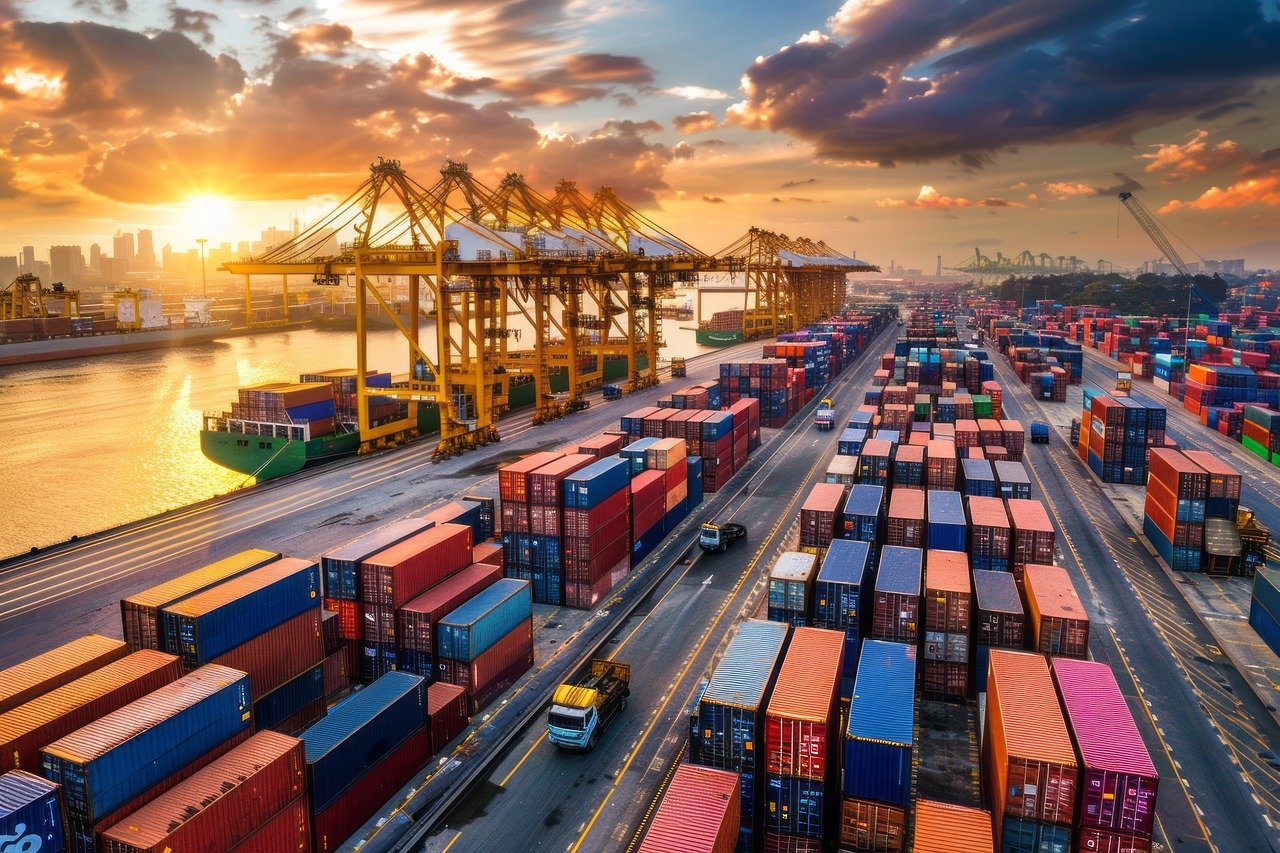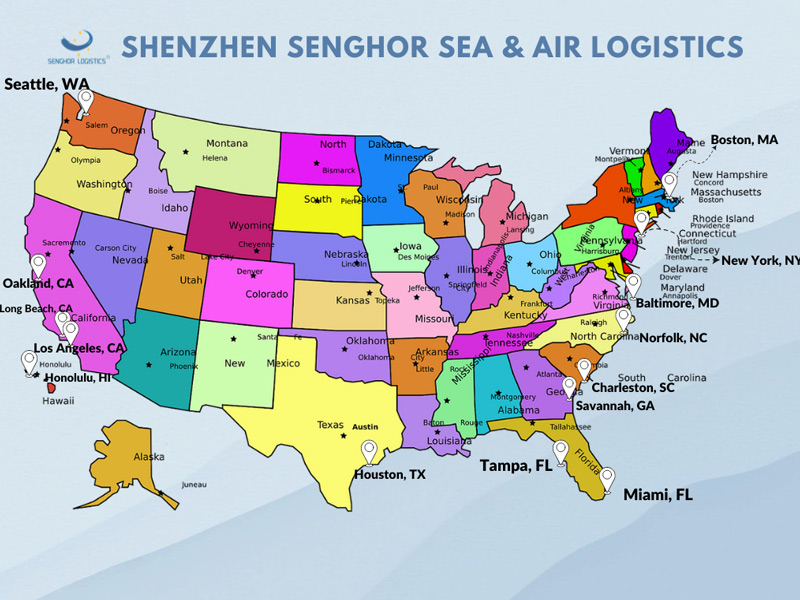Analysis of shipping time and efficiency between West Coast and East Coast ports in the USA
In the United States, ports on the West and East Coasts are important gateways for international trade, each presenting unique advantages and challenges. Senghor Logistics compares the shipping efficiency of these two major coastal regions, providing a more detailed understanding of cargo transit times between the east and west coasts.
Overview of Major Ports
West Coast Ports
The West Coast of the United States is home to some of the busiest ports in the country, including the Ports of Los Angeles, Long Beach, and Seattle, etc. These ports primarily handle imports from Asia and are therefore crucial for goods entering the US market. Their proximity to major shipping routes and significant container traffic make them a vital component of global trade.
East Coast Ports
On the East Coast, major ports such as the Ports of New York, New Jersey, Savannah, and Charleston serve as key entry points for cargo from Europe, South America, and other regions. East Coast ports have seen increased throughput in recent years, particularly following the expansion of the Panama Canal, which has enabled larger vessels to more easily access these ports. East Coast ports also handle imported goods from Asia. One way is to ship goods via the Pacific Ocean and then through the Panama Canal to the East Coast ports of the United States; another way is to go west from Asia, partly through the Strait of Malacca, then through the Suez Canal to the Mediterranean, and then through the Atlantic Ocean to the East Coast ports of the United States.
Sea Freight Time
For example, from China to the United States:
China to the West Coast: Approximately 14-18 days (direct route)
China to the East Coast: Approximately 22-30 days (direct route)
| US West Coast Route (Los Angeles/Long Beach/Oakland) | US East Coast Route (New York/Savannah/Charleston) | Key Differences | |
| Timeliness |
China to US West Coast Ocean Freight: 14-18 days • Port Transit: 3-5 days • Inland Rail to the Midwest: 4-7 days Average Total Time: 25 days |
China to US East Coast Ocean Freight: 22-30 days • Port Transit: 5-8 days • Inland Rail to inland: 2-4 days Average for the Entire Journey: 35 days |
US West Coast: Over a Week Faster |
Risk of Congestion and Delays
West Coast
Congestion remains a significant issue for West Coast ports, especially during peak shipping season. High cargo volumes, limited expansion space, and labor-related challenges can lead to longer waiting times for ships and trucks. This situation has been exacerbated during the COVID-19 pandemic, leading to a higher risk of congestion.
East Coast
While East Coast ports also experience congestion, particularly in urban areas, they are generally more resilient to bottlenecks seen on the West Coast. The ability to quickly distribute cargo to key markets can mitigate some of the delays associated with port operations. The risk of congestion is moderate.
Further reading:

Both West Coast and East Coast ports play a vital role in the freight industry, each with its own strengths and weaknesses in terms of shipping efficiency. From China to the United States, ocean freight costs to West Coast ports are 30%-40% lower than direct shipping from the East Coast. For example, a 40-foot container from China to the West Coast costs approximately $4,000, while shipping to the East Coast costs approximately $4,800. Although West Coast ports benefit from advanced infrastructure and proximity to Asian markets, they also face significant challenges, including congestion and delays. In contrast, East Coast ports have seen significant efficiency improvements but must continue to address infrastructure challenges to keep pace with growing cargo volumes.
With the continuous development of global trade, meeting customers' demands for shipping time and logistics cost has become a test for freight forwarders. Senghor Logistics has signed contracts with shipping companies. While guaranteeing first-hand freight rates, we also match customers with direct vessels, fast ships, and priority boarding services based on their needs, ensuring timely delivery of their goods.
Post time: Aug-13-2025













